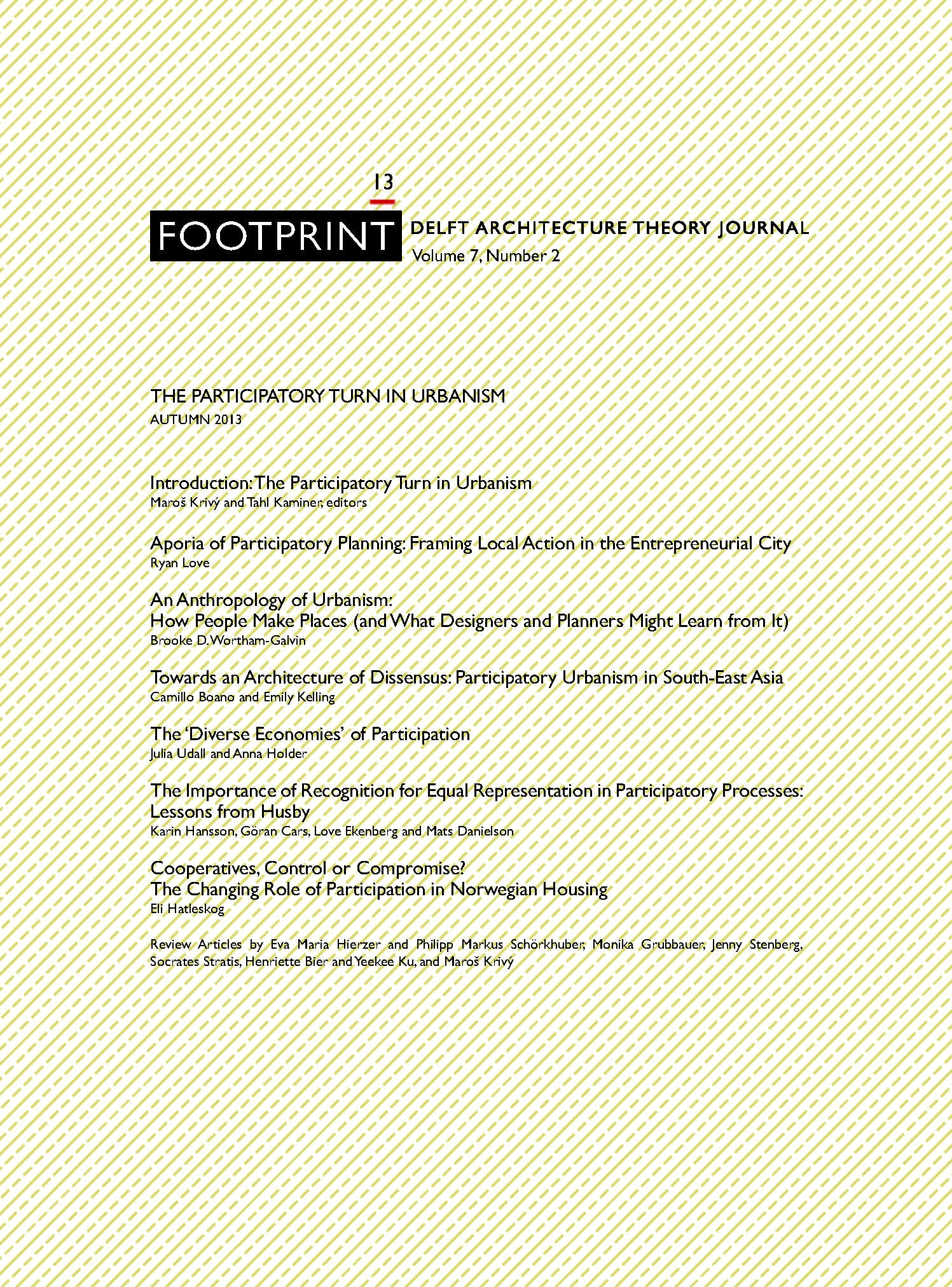Infrastructural Critique. The Upside-Down of the Bottom-Up: A Case Study on the IBA Berlin 84/87
DOI:
https://doi.org/10.7480/footprint.7.2.773Abstract
Participation in planning is a logical consequence of the democratisation of society due to the social and cultural changes related to modernism. Anarchistic participation, as in Autogestion, within a development process, is a critical utopian alternative draft to existing power structures. The participatory turn represented by the International Building Exhibition Berlin 1987 (IBA) meant the institutionalisation of these utopian ideas, resulting in a heterotopian notion of participation instrumentalised by governing and economic forces.
The most important aspect to our argument is that participation is a matter of critique – with critique as the very core of the modern understanding of progress – and thus enabling forms of improvement in planning, regulating and governing with architectural and urbanistic means. Those means simply embody a specific form of resisting critique and certain shifts in the structures of governing revealing an infrastructural critique which both re-forms the elements and the relations of what is to be resisted.
Downloads
Published
Issue
Section
License
- Authors retain copyright and grant the journal right of first publication with the work simultaneously licensed under a Creative Commons Attribution License that allows others to share the work with an acknowledgement of the work's authorship and initial publication in this journal.
- Authors are able to enter into separate, additional contractual arrangements for the non-exclusive distribution of the journal's published version of the work (e.g., post it to an institutional repository or publish it in a book), with an acknowledgement of its initial publication in this journal.





